As an Amazon Associate I earn from qualifying purchases.

File homemade masa harina, which is masa flour, into the “Because I Can” category. Making masa harina at home is a labor of love, but one I firmly believe is worth your time.
Let’s start with what is masa harina? It means “dough flour” in Spanish, and it refers to fresh corn masa that has been dried to a flour. Masa harina is incredibly useful for making homemade tortillas, tamales or any other food that uses masa because all you need to do is add water and you’re ready.
To be clear it is not corn flour and you cannot substitute cornmeal or corn flour for masa. Masa harina is nixtamalized, which we’ll get into in a bit.
Before we get too far, know that freshly masa is a superior product, hands down. But that requires you to nixtamalize corn overnight, then grind the corn, while it’s wet, fine enough to make a tortilla. It is absolutely doable, but making fresh tortilla masa at home is a post for another day.
Virtually the entire Mexican disapora, whether in Mexico itself or Chicago or Florida, Texas or wherever, uses an industrial masa harina, and most of that is the brand Maseca.
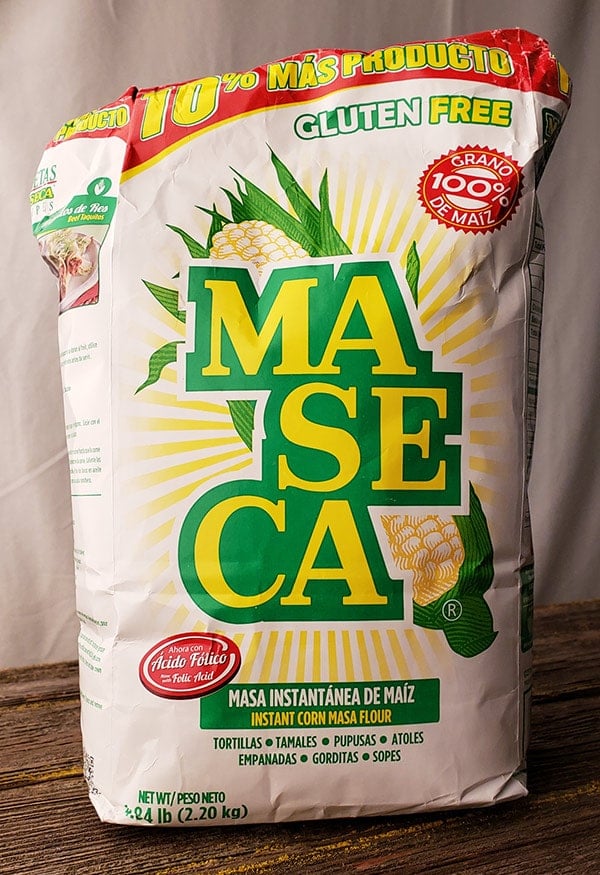
It is not a very good product. Will it make a better tortilla than one you buy premade in the store? Sometimes, but with the advent of “artisan” tortillas on the market, and the expansion of real Mexican markets everywhere in the US and Canada (I found a nice little market in Winnipeg recently), you can often buy better tortillas made at the store itself.
But until very recently Maseca was your only option if you wanted to actually make tortillas or tamales or whatever at home. There are now two companies that make a much better quality masa harina than Maseca: Bob’s Red Mill and Masienda. Both make an excellent masa harina that I can recommend.
Bob’s masa harina is yellow and Masienda’s is white, or really ivory. That has most of your masa needs covered, yes? Well, sorta. You will notice the red and blue masa harina in the picture. You cannot buy that anywhere. You have to make it at home.
The real advantage of making your own masa harina is that you can use any variety of corn you can get your hands on, or grow yourself. Color is the chief attraction here, but also flavor: Some of you reading this are Southerners, and Southerners know that good grits matter.
It’s the same with masa harina, which are, in a galactic sense, just fine grits. Good grits have texture, better flavor and aroma — and they also need to be refrigerated because they’ll go rancid after a couple months at room temperature. Ditto for masa harina.
Here’s how to make your own.
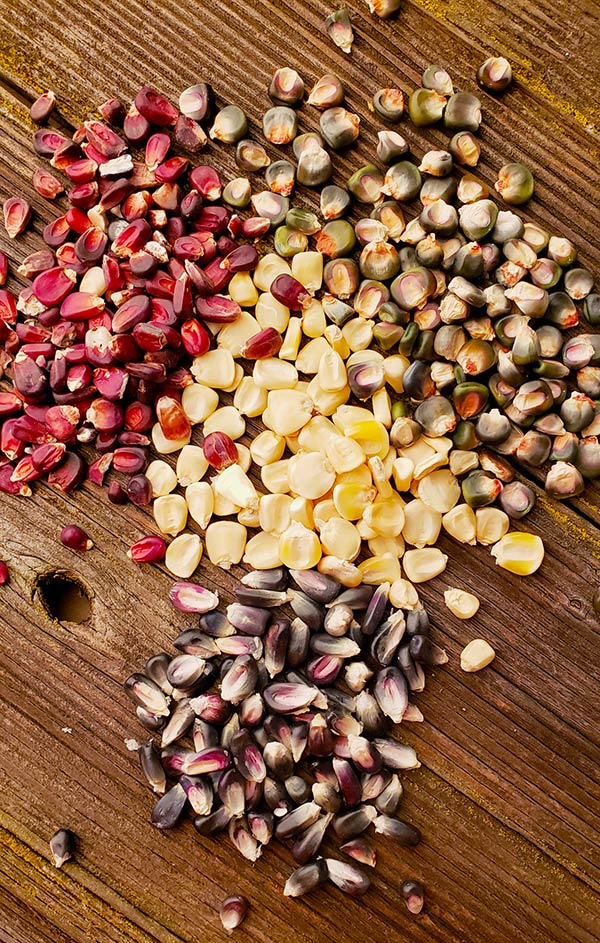
Start with corn. Duh. And if you are going to do this, you want legit, heirloom flour, dent, or flint corn if that’s all you can find. I recommend buying from Masienda, Heirlooms and More, or, for red bloody butcher corn (the red corn in the picture), Breadtopia. Or grow your own.
You absolutely need special equipment, alas. I use a hand grinder, a dehydrator and a dry blender.
I use an old-school Victoria grinder, but Corona makes one that’s just as good. It costs about $50, although if you look on Craigslist I am sure you can find them cheaper. For a dehydrator, there is nothing better than an Excalibur 9-Tray, which, at $180 isn’t cheap, but I’ve used mine for many years for dehydrating everything. I’ll give you some other options in a moment. The dry grinder I prefer is the Vitamix Dry-Grains Container, largely because I already have a Vitamix blender. (Oh, and none of these companies is paying me to recommend their products.)
OK, that’s a ritzy set-up, but hey, I do “Hanksperiments” all the time so I get lots of use out of these devices. The one you absolutely need is the corn grinder. Finding alternate devices that grind wet corn isn’t easy. A cheaper alternative to a dehydrator would be to dry the ground corn in a low oven, or, better, in a hot garage or in hot shade. The lower the temperature you can dry the corn at, the better the flavor.
As for the dry grain grinder, a spice mill or coffee grinder will work fine, just not as fast.
OK, so you have corn and you are set up, equipment-wise. What now? Start by making nixtamal. Huh? Read this post, which walks you through the process. It requires an overnight soak.
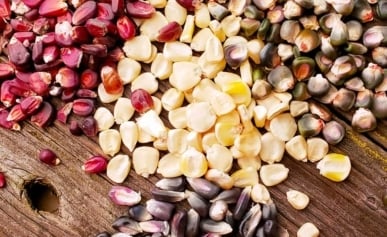
How to Make Nixtamal
Here’s how to prep dry field corn to make either fresh corn tortillas, or to get it ready to grind for masa harina.
Read MoreOnce you have your nixtamal, grind it through your corn grinder. You should know that making masa often gives me good biceps… yeah, it’s a workout to grind grain by hand. Think of it as the abuela workout. But it’s not that tough.
Once you have your masa ground, you need to dry it. I lay it out on screens that have the dehydrator sheets on them, so the masa doesn’t fall through the mesh. I dry around 100°F and it takes the better part of a day, about 6 hours.
I then let the masa dry overnight before blitzing it for about a minute or two in the Vitamix. You then have amazing homemade masa harina.
Keep it in the fridge or freezer and it will smell almost exactly like fresh masa when you make tortillas or tamales with it. It is amazing stuff that will convince you to make homemade tortillas more often. After all, you’ll have the masa flour handy.
Just add water.


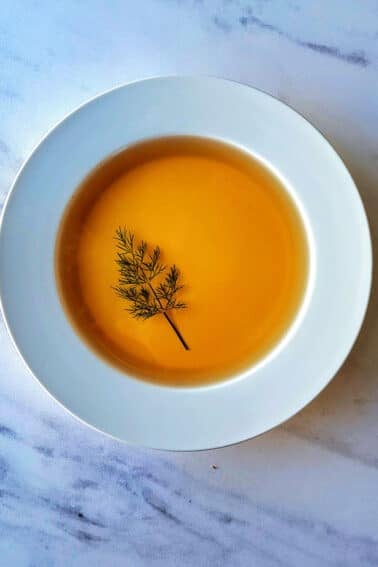
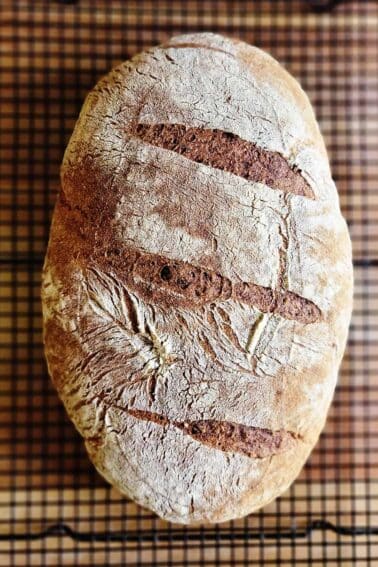
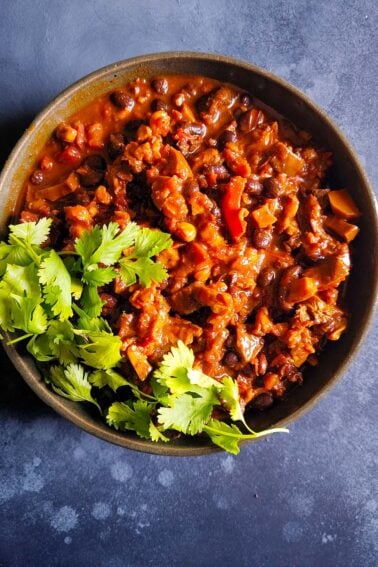
I got an Estrella grinder, same concept as Victoria, I noticed they grinder plate metal is mashed and maybe flaked off into my masa. Am I doing it wrong? Have you experienced this? Seems a bit sketchy. I’ve read other forums where people complain about this but you are the reliable source I depend on. Any thoughts? Thanks for all the inspiration! I grew my own Oaxaca green corn this last summer in SLO, best damn tamales.
Chris: I’ve never had that happen with the Victoria. Maybe you are grinding too tight? Maybe loosen up the plates?
Thanks, I’ll try that next time. I was probably overly concerned with trying to get a finer grind and cranked it too hard.
Been meaning to try this for several years! I think I may have FINALLY found a use for my kitchen aid stand mixer grinding attachment. It sucks for grinding meat (overheats it, takes forever etc.). But I ran my nixtamal through it, once with the course plate, and then with the fine plate, and it worked beautifully. I HAVE a Victoria, but man they are a pain, and they never seem to mount in a way that feels sturdy. Kitchen Aid worked great, and I didn’t have to kill myself.
Side note to Hank. You mention flint corn and dent corn in your nixtamal article. But the reality is there are THREE kinds. Flint (which includes sweet corn and popcorn), flour corn and dent corn. Dent is simply a cross between flint and flour and is dented because of the way the endosperm dries down in the kernel. Highly recommend either of Carol Deppe’s books for a awesome education on corn and its genetics/breeding. This is my own blog post on growing different corn varieties. https://milesawayfarmww.com/2016/10/06/learning-about-corn/
Thanks for the amazing article, Hank!!! I was wondering if dehydrating the nixtamalized corn (after processing it in a blender with water) on a microwave oven would be an option. Thoughts?
Thiago: I have never heard of anyone dehydrating anything in a microwave oven, so I don’t know, sorry.
What an exceptional guide. Many thanks! Quick question: what happens if I cheap out and just use the normal vitamix container, as opposed to the dry grain version?
Chad: I haven’t had the courage to try it because it might destroy it. If you want to “cheat” with that container, I’d buzz the hell out of the wet corn with enough water to keep it in a whirlpool, then remove the water using the dehydrator.
Copy that Captain Hank. Many thanks for the advice.
Hello Hank,
For the required equipment, you mentioned we only need three things, a corn grinder, a dehydrator and a dry grinder.
How will the following tools work:
1. Komo mill grinder as a corn grinder
https://pleasanthillgrain.com/komo-classic-grain-mill-flour-grinder-wood-stone
2. Breville Smart Oven Air as the dehydrator
https://www.breville.com/us/en/products/ovens/bov900.html
3. I have a Cuisinart food processor, but I don’t mind purchasing a separate piece of equipment for dry grinding. You mentioned that you just use the Vitamix attachment since you already have a Vitamix, but is there a dry grinder that you recommend that is the absolute best tool for this step?
Aloha from Hawai’i!
You are missing a tool that can wet grind the corn. Using your setup I would nixtamalize the corn, then dry it in the oven at the lowest possible temperature. Then you can use the Komo to grind the dehydrated nixtimized kernals. I have not done what I describe but it should work fine just make sure you have the ability to keep your oven at a low enough temperature <120° F. The limited capacity of the oven means that you will be making tiny batches that may not be worth your effort. I second the Excaliber as a great tool with lots of uses and excellent reliability.
Hi my name is Elísabet and i live in Spain. I have not been able to fined masa harina here in Spain. Do you know what i can fo ?
Sincerly Elisabet
Elisabet: Sorry, there is no substitute. You will have to make it yourself if possible. You will need to follow these directions: https://honest-food.net/how-to-make-nixtamal-nixtamalization/
Hello all!
Thanks for the great article Hank! I had mixed feelings about a hand grinder (pun intended) so I developed this workaround based on a comment on another blog post from a gentleman who worked in a Mexican restaurant: Take your nixtamalized corn kernels after they’ve sat overnight and been rinsed, then put them in a blender (I have a Vitamix) with approximately an equal amount of spring water. I did 2 cups nixtamalized corn kernels to 1 1/2 cups water. Blend on high for 1-2 minutes. A beautiful slurry will be the result.
You have two options after this. For immediate use:
Have ready-to-use dry masa harina on hand. Add dry masa harina to your fresh masa slurry until you reach your desired masa texture. You can now use this to make fresh tortillas.
I like to let my fresh masa sit for about 30 minutes to absorb the water and make sure I don’t need to add a tiny but more dry harina.
(Basically, you’re still adding the water to the masa you need, just at an earlier step.)
For later use, and if you are hardcore:
Pour your slurry into 2 layers of cheesecloth and hang over your sink for 3-6 hours. Squeeze it a little to accelerate the release of the water.
Once it’s moist as opposed to runny, follow Hank’s steps to dry your mixture in the oven or dehydrator.
From the blending, your masa texture will be fine, you can blend it again once it’s dry if you want your harina really fine 🙂
Hope this helps and cheers to all my fellow masa makers!!
Love, K
Thanks for the great article Hank. I just started making homemade masa with the corn I got from Masienda and I love it! The whole definitely a lot of work and takes a long time so I was wondering your opinion on how to be more efficient….do you think its better to make a lot of masa harina at once so you can easily use it later, or would you make a large batch of fresh masa and save it in the fridge/freezer? Or is it just easiest to make the tortillas and save all of them? I’d love your thoughts!
Nick: I make a big batch of masa, use what I can fresh, then dehydrate it for masa harina. It will then keep for months in the fridge.
Thank you Hank, I have a Victoria model already. Somehow that message did not post. Just wanted to check that it will grind fine enough. Appreciate your help!
Hank, I also have a NutriBullet, two electric coffee grinders and an old wimpy blender I use only for squash pancakes. Maybe I need to get a dry blender?
Lynn
Lynn: You need something powerful. Corn, even cooked corn, is strong. I would buy the hand cranked Victoria grinder. You can buy them on Amazon.
Hank, we have been making blue corn tortillas for some years from purchased masa harina. Last year we grew our own dent corn last year and are ready to make our masa harina. I’m wondering if I can use the nixtamalized corn wet (straight from the grinding) to make tortillas. Dry the rest for later use.
Lynn: Absolutely! It will make better tortillas, actually. BUT, you need to grind the wet corn as fine as you can, and this can be difficult. How are you grinding your corn now?
I lived in California and love Mexican tamales. I now live in Italy and I’m trying to find corn flour to make tamales. The only corn flour available is for palenta and I think this may be too course. It may be the wrongtype completely. How can I determine the correct grind and type for tamales and if I can’t source it locally, how can I createa suitable substitute?
Alfonso: I am afraid you are out of luck. You need masa, not cornmeal. Unless you can find a Mexican restaurant in Italy, I suspect it might be impossible to find.
Hi alonso! I live in South Italy and am growing my own maiz from seeds i got in New Mexico and Arizona: blue dent, bloody butcher, glass gem… i am actually making my own nixtamal. Should you need , i could send you the grains so that you could make your own.
Since I have a garin mill, I’ve made masa harina by nixtamalizing the crn, drying it, and then grinding it. Works great!
I’m interested in this process. How long do you have to dry the nixtamalized corn kernels? I have an Excalibur. I’m curious about temperature and time.
Kathryn: You don’t dry them. You grind wet and dry the ground masa.
First off thank you for this post, it’s hard to find good info on garden to table “how to’s”. Secondly, I am using Purple Hopi corn that I grew in the garden as I am drying it (@ 95f) it looks as though it will dry like thick fruit leather. Is that how it dried for you?
Shawnee: Sorta, but since it’s been ground already, once it’s fully dry it grinds really well that second time.
Hank, a suggestion for drying the masa mush or dehydrating anything and what I use. You said 100°F is perfect. The temperature is use for dehydrating is 105°F and I’ve found that temperature is perfect for rising bread dough and culturing yogurt as well as dehydration herbs and drying bread slices for bread crumbs.
I never found the puny little light bulb that’s comes with ovens to be bright enough for me to check what I’m cooking so I switched it with a 75 watt incandescent bulb. Incandescent bulbs get incredibly hot so I figured they’d have no trouble with oven temperatures. The bulbs do fine even when I cook at 450°F. But if I turn on just the oven light and not the oven it warms to 105°F – perfect for what I need.
Because ovens and their insulation are different, I’d suggest experimenting with 60, 75 and 100 watt bulbs to check what temperatures they give. If a 60 watt gives too low a temperature but a 75 or 100 watt is a bit too warm, a pot holder could be placed to prevent the oven door closing completely but only leaving it a tiny crack open to let some heat escape.
I’m all about experimenting in my kitchen too but I look for the cheapest methods I can think of. An oven, after all, makes a BIG dehydrator and has multiple uses for me too. Just an extra note, I dry most everything on parchment baking paper (I reuse it too) or if especially wet material, I’ll use non-stick aluminum foil which I also reuse after wiping.
(Sorry for the long post but I wanted it to be clear for anyone who might read it.)
I have a bag of dried yellow hominy corn and one of dried white hominy corn. Can I make masa harina from them? I want to make my own corn tortillas. I don’t have access to premade masa harina.
Bonnie: If it’s hominy corn, then yes, this is basically the makings of masa harina. You need to grind it very fine to make tortillas.
Great article! Have you heard of anyone drying the nixtamal (whole kernel) in a dehydrator and then grinding it to flour before use?
I think it might be an easier process but unsure what the final product would taste like?
Jason: Yes, I’ve tried this but the dehydration and grinding process take much longer, more than offsetting the labor involved in this process. I also seem to get a finer grind with this method as opposed to drying the kernels whole and then grinding.
Where was that market in Winnipeg Mr. Shaw? Thx for the great recipes!
Jeff: There are three. Google “Winnipeg Latin Market” and you will have your pick!
I was more than a little astounded to find a really nice blue corn masa harina available in New Zealand, of all places (mexifoods.co.nz). Have been living on the North Island for 2+ years now, and quickly realized the neccessity of learning to make all things Mexican at home, due to the disturbing lack of taco trucks here. If we can find the right corn and equipment, will give this a go. Thanks for the great recipes and detailed directions!
Thanks for this. I make my own, but not my own masa harina, as I have a good source of masa locally, but I’m planning to try your masa harina method just for grins. When I use masa harina, I leave my masa a little wet when before resting, and it ends up perfect when I use it. I find if I start with the right texture, the final product needs a bit more water as I work to prevent crumbling. Also, I usually find that even the nicer tortillas and some of the masas available in Southern California have additives that really change the taste for me. I grew up in Texas, where corn tortilla ingredients are usually just corn, lime, water and maybe salt and the local tortillas tend to have a more pronounce acidic taste and weird feel that I can avoid with masa harina. Also, when I can get it, I use the Quaker Masa Harina instead of Maseca if i need instant, Not sure why, but I prefer the taste.
As far as sources for masa harinas, there’s also Bay Area https://almasemillera.com/collections/masa-harina/products/blue-corn-masa-harina